Research
Research Questions
The overarching goal of the NES-LTER is to understand and predict how the dynamic physical environment impacts ecosystem productivity across intimately connected food web levels, from microbes to economically important fisheries.
Capitalizing on high levels of seasonal and interannual variability in the NES, we study short-term biotic responses to environmental variables in order to:
- characterize low and high export food webs,
- understand the linkages and transfer of energy from the phytoplankton to pelagic fish, and
- identify the mechanisms that underlie shifts between high and low export communities.
Our mechanistic knowledge will be used to understand and predict the impacts and feedbacks associated with ecosystem disturbances, including their impacts on fish.
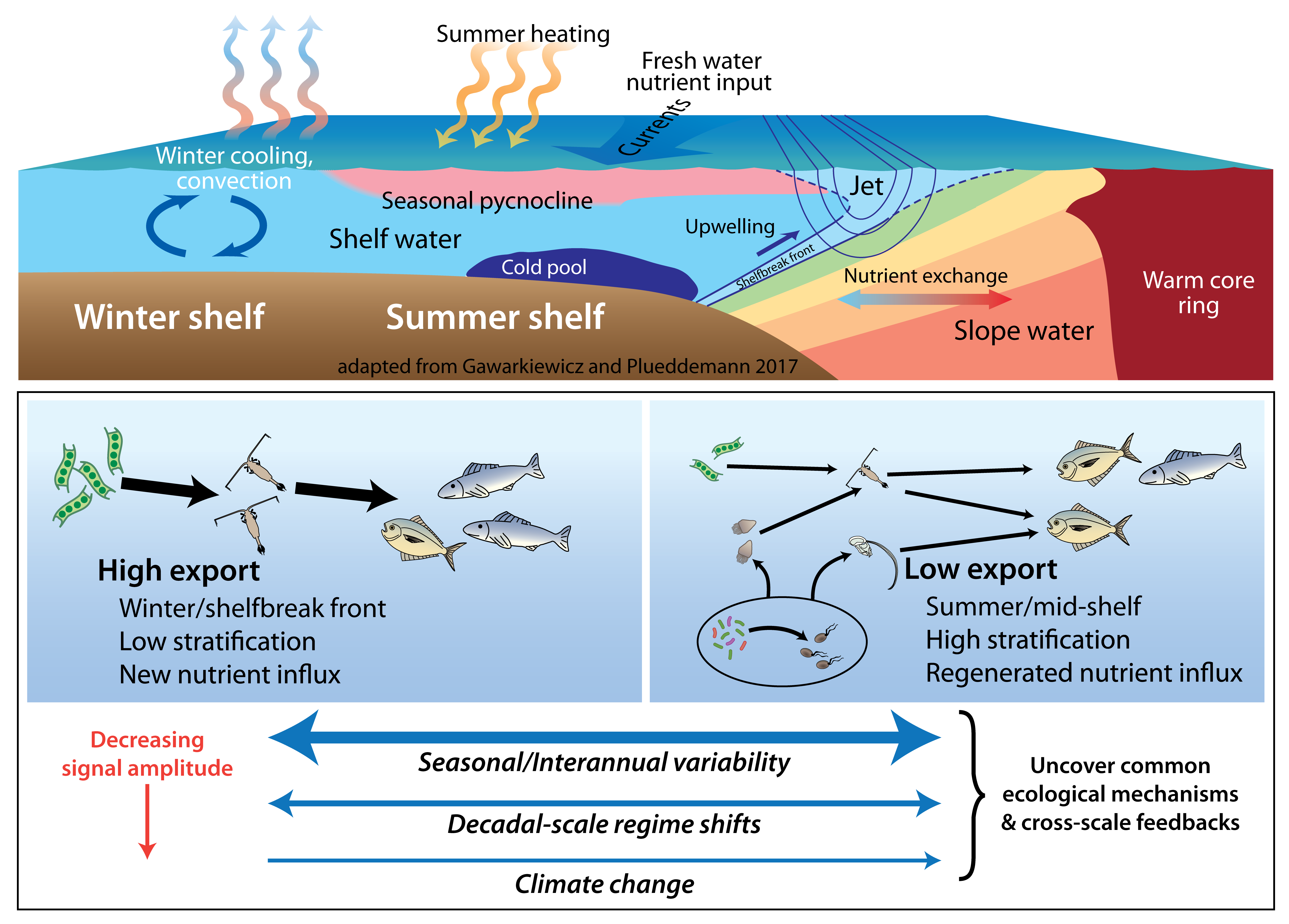
Top: Conceptual diagram of physical processes across the shelf in winter and summer. Middle: Representative, simplified food webs of high- and low-export conditions, contrasting the relatively simple food chain of high-export with the more complex microbial loop-dominated food web of low-export conditions. Bottom: Arrows indicate the range of time scales for hypothesized shifts between these food webs.
Related Information
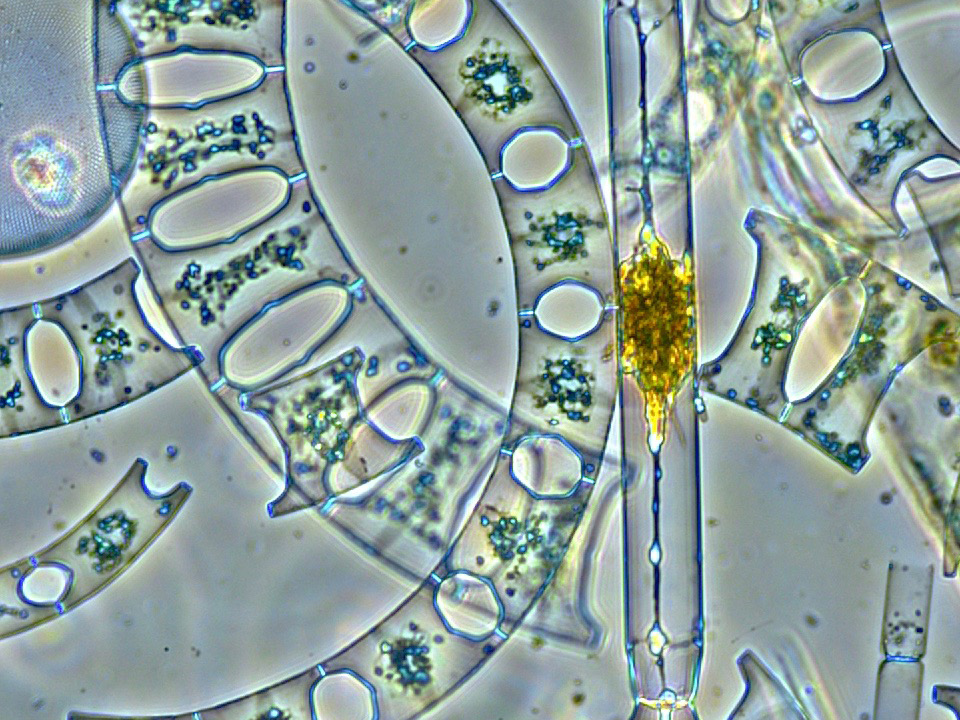
(Photo courtesy Susanne Menden-Deuer)
Question 1
What are the main factors controlling spatial and temporal patterns of plankton species composition and biological production?
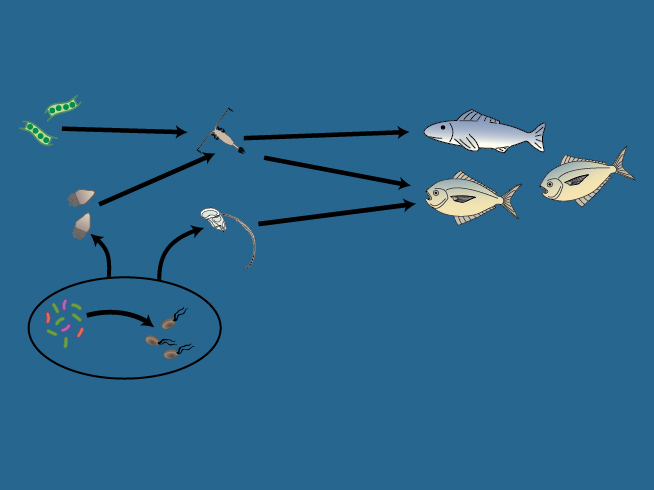
(Drawing by Jack Cook, Woods Hole Oceanographic Institution)
Question 2
How is variability in the feeding, condition, and distribution of pelagic forage fish linked to interannual variability and multi-year trends in plankton size structure and species composition and the ratio of export to total primary production?
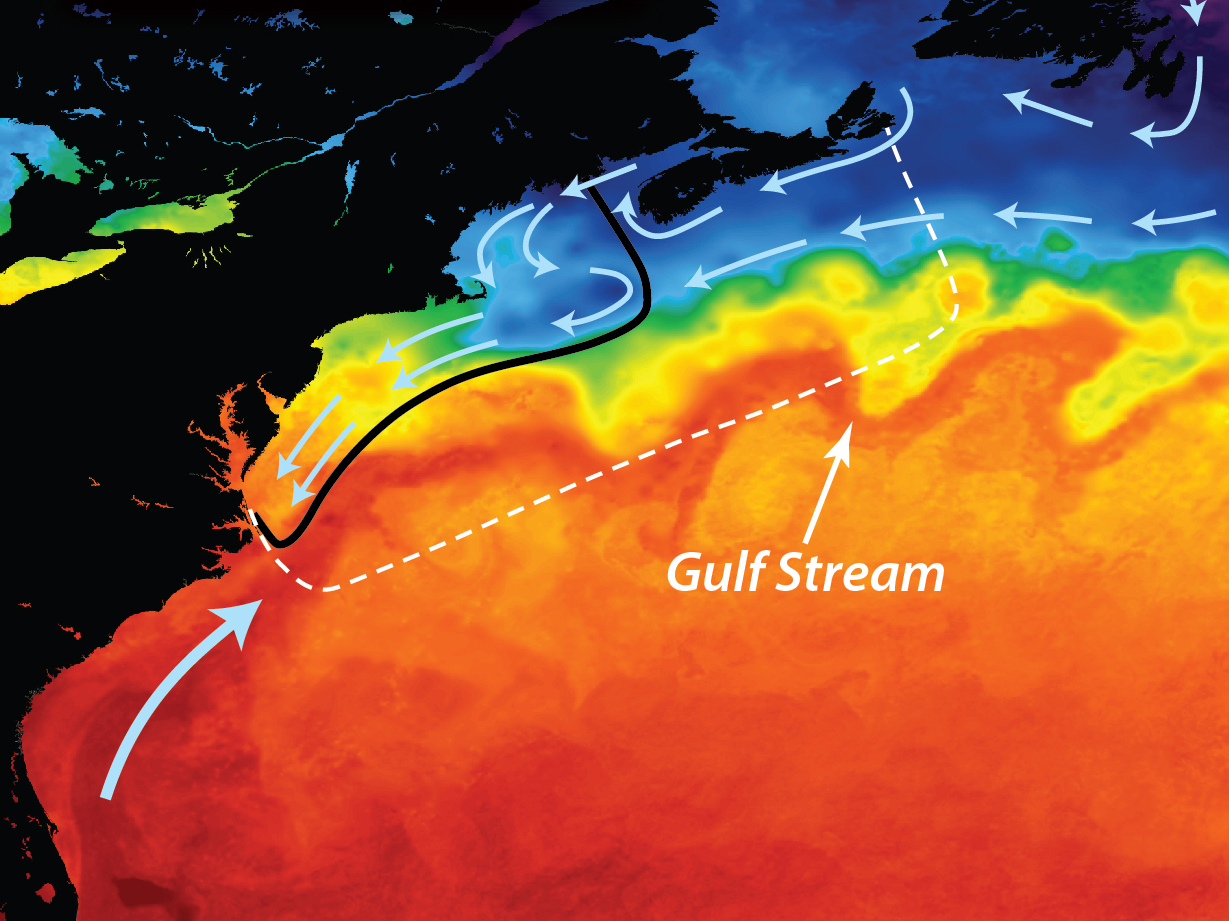
Satellite Sea Surface Temperature (SST) image from NASA Worldview, 10 July 2010, also indicating modeling domain that extends beyond NES region.
Question 3
How robust and resilient to disturbance are food web linkages on the NES?
Approach
The NES-LTER project integrates long-term observations, process and experimental studies, and models to understand and predict how planktonic food webs are changing on the Northeast U.S. Shelf, and how those changes impact ecosystem productivity, including higher trophic levels. The NES-LTER strategy combines observations that provide regional-scale context, process cruises along a high gradient cross-shelf transect, high-frequency time series at inner- and outer-shelf locations, coupled biological-physical food web models, and targeted population models.
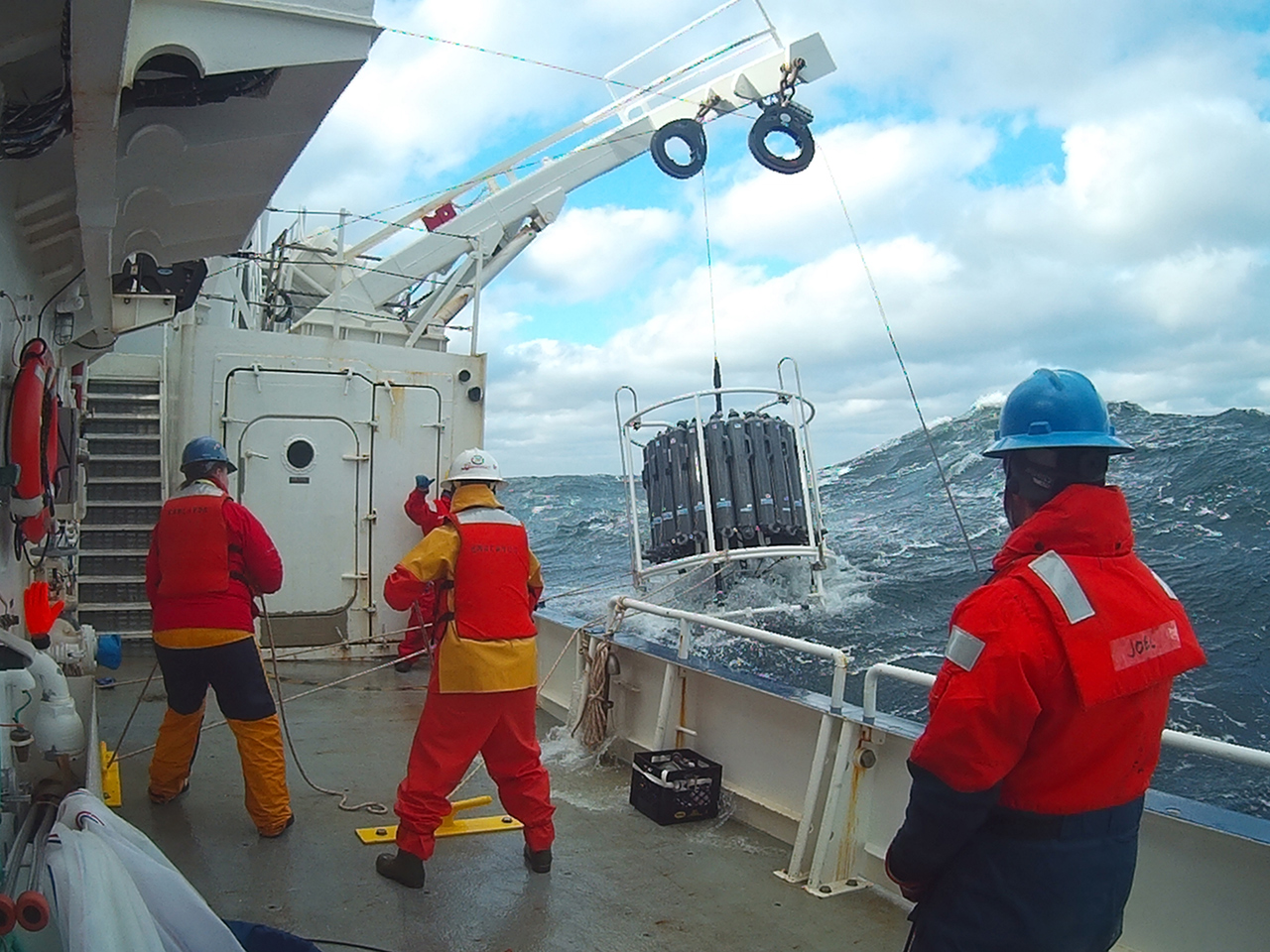
Deploying and recovering the CTD/rosette from R/V Endeavor during the 2018 Winter Transect cruise EN608. Image credit: Jacob Strock, University of Rhode Island.
Observations
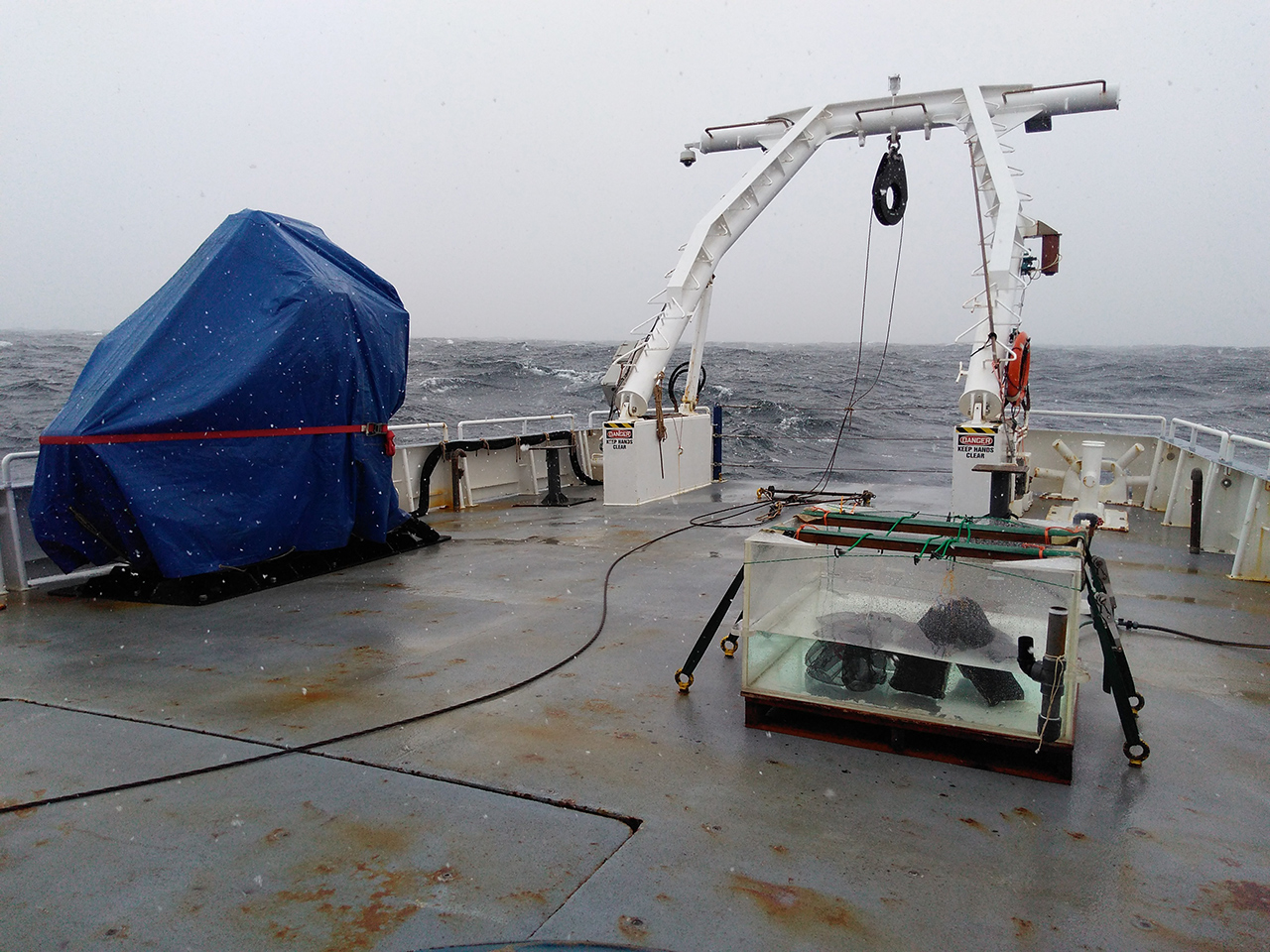
Incubation experiments on the deck of R/V Endeavor during the 2018 Winter Transect cruise EN608. Image credit: Susanne Menden-Deuer, University of Rhode Island.
Experiments

The NES-LTER project includes mathematical models of ecological systems. Models allow the team to expand observations to a broader region. (Photo courtesy Michael Neubert)
Models
Multi-disciplinary
Biological, chemical, and physical oceanographers work together in a multi-disciplinary team to study the NES ecosystem.

Water samples are filtered and net tows are processed and preserved. (Photo by Stace Beaulieu)
Biology

NES-LTER PI Rachel Stanley setting up the EIMS on R/V Endeavor. Image Credit: Stace Beaulieu, WHOI.
Chemistry

Physical measurements from transect cruises and in collaboration with OOI gliders. (Photo by Stace Beaulieu)
Physics
Core Research Themes
The five core research themes of the LTER Network facilitate cross-cutting science. The NES-LTER strategy includes integration and synthesis of multi-disciplinary observations, experiments, and models to address these themes.
- Patterns and controls of primary production
- Spatial and temporal population dynamics and food web interactions
- Patterns and controls of organic matter accumulation and decomposition
- Patterns of inorganic inputs and movements of nutrients
- Patterns and frequency of disturbance


